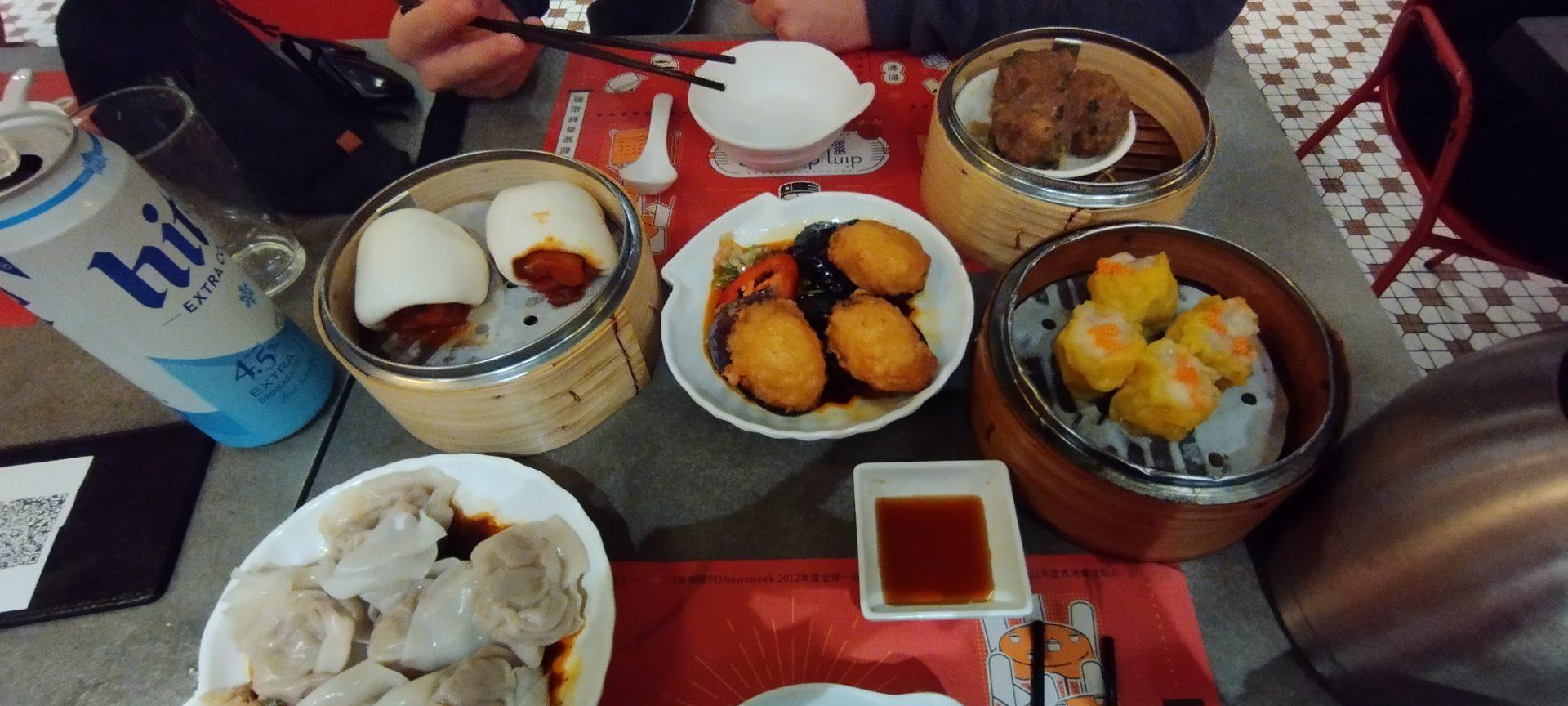Honestly, I discovered dim sum late… Did I know that it is typical for Hong Kong? Of course, I had it on my list of foods to try. Did I know how amazing dim sum is? Sadly, no; so I thought it was something to try and that’s it, not realizing that once you try it out, you don’t want to stop eating it. In the morning, in the evening; steamed, fried; in traditional restaurants or in more modern places… Dim sum is one of the great culinary treasures of the city that you cannot miss on your trip, so I would like to tell you where to eat dim sum in Hong Kong, based on my experience during the 7 days I was there.
Content index
Types of dim sum
Like Spanish tapas, dim sum consists of and translates to small ‘bites’, of different types and with different preparations. Although more common in other regions of China, dim sum is also very typical in Hong Kong.
It usually features dumplings stuffed with meat, fish, seafood or vegetables, although it is common to find other preparations in dim sum restaurants. The way of cooking also varies, being able to find dishes steamed in the typical bamboo steamers, fried dishes, blanched vegetables, grilled meats, soups, dumplings of different types, meats with sauces – especially inner pieces -, and a long etcetera.
Siu mai – Steamed pork dumplings
This is the most iconic dim sum in Hong Kong. Although the most common is the one with pork, there are many varieties, with mixtures that include pork, fish paste, mushrooms, shrimp… It is easily recognizable by the yellow color of its dough and the orange touch it always has on top. A staple of Hong Kong dim sum restaurants, it is also one of the most popular street snacks.
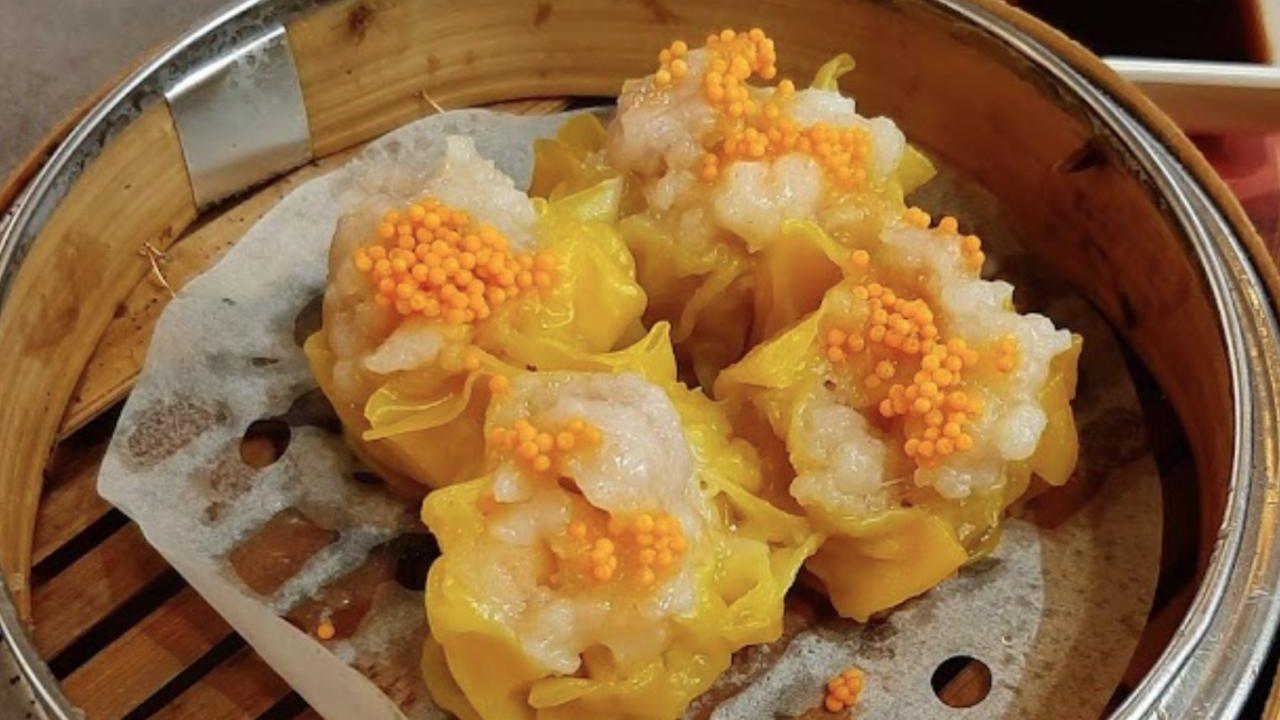
Ha gau – Steamed shrimp dumplings
These transparent dumplings are always filled with shrimp and are soft to the touch and taste. They are steamed in a traditional steamer, which makes the dough transparent and gives them a unique look. It is common to combine in these dumplings and the previous ones in a dish known as ha gow-siu mai (you may see it in some menus and you will have two pieces of each, perfect if you want to try as much as possible).
Xiao long bao – Pork dumplings stuffed with soup
This typical Shanghainese delicacy, often served in Hong Kong, is one of my favorite snacks. Available in many parts of the world (the first time I tried them was in New York’s Chinatown), they are also a must in Hong Kong. They are on every menu and they are always, always delicious. Remember to spoon them up, bite into them, slurp up the soup, dip them into the sauce and eat it them all in one bite – the ritual is sometimes as important as the food…
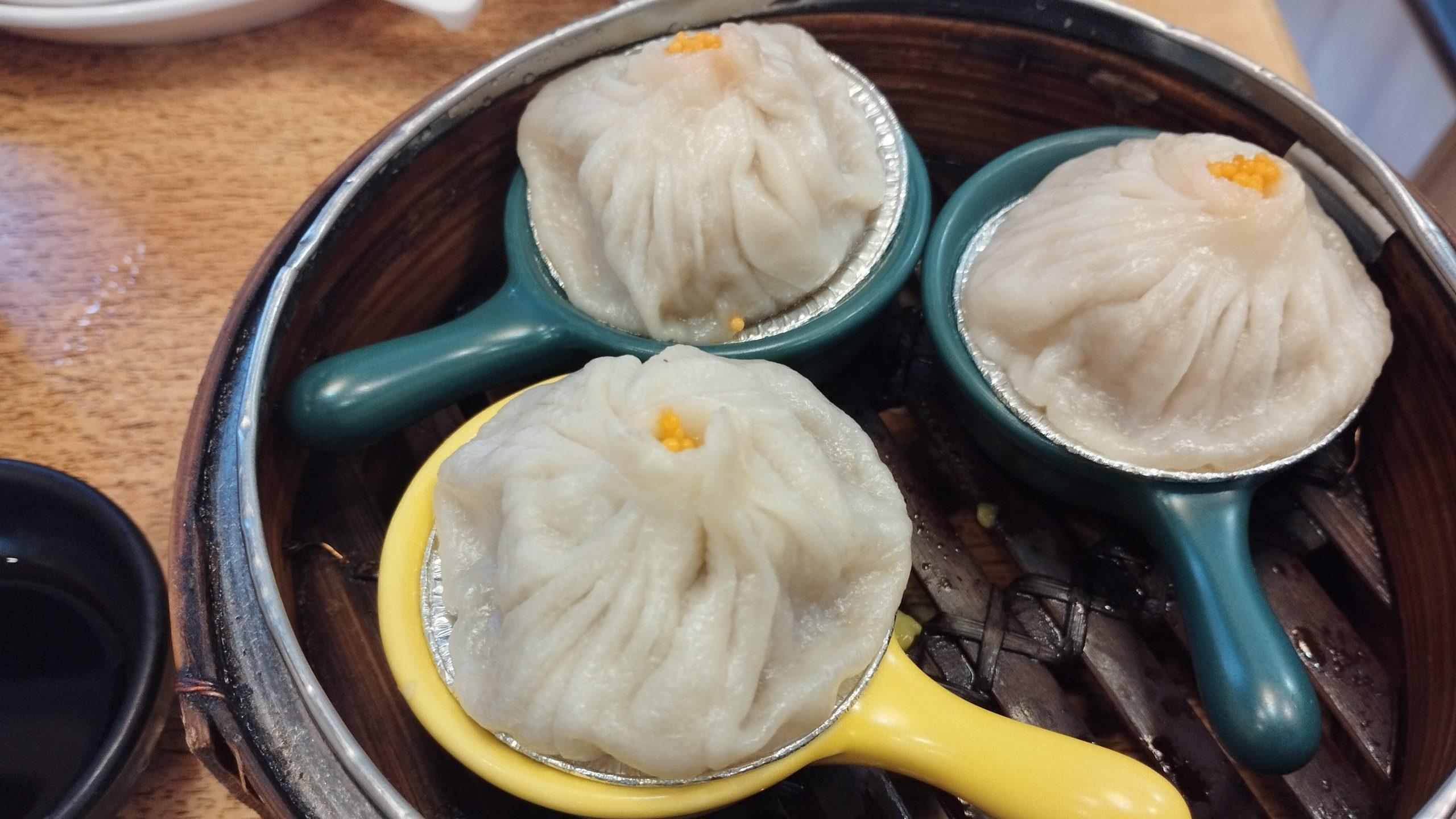
Cheong fun – Steamed rice paper rolls
These rice paper rolls are both a typical Hong Kong restaurant dish and a street food snack. While the ones you’ll find at street food stalls are usually unfilled and have a thick sauce on top, the ones served at restaurants are usually filled with meat, seafood or vegetables and bathed in a more liquid sauce.
Char siu bao – Bao stuffed with bacon in sauce
These baos are tender and soft, like a cloud. Fluffy on the outside and savory on the inside, the contrast of textures and nuances is a delight. Inside is slow-cooked pork belly, always accompanied by a sauce. This is one of those dim sum dishes that you will find wherever you go, and it is not bad to compare them until you find your favorite (in my case, they were all…).

Lo mai gai – Glutinous rice paste with meat
This dim sum may look like what the tamale is in South and Central America, but instead of being made with corn, in this part of the world it is made with rice. A sticky rice that forms a paste to which meat (chicken, beef, pork…) is added and steamed. It usually comes as a single piece, but of a large size, ideal for sharing. Not all restaurants have it, but if you see it, do not hesitate to ask for it.
Tradition, how to eat, how much and when to eat
Traditionally, dim sum is eaten for breakfast and is more common on weekends. It is on these days that specialized restaurants are filled with Hong Kong families, so it is common to find queues, something that should not intimidate you, as you just have to enter the place, indicate the number of people you are, and you will be given a paper with the order to will be called when tables are released. Just like in the supermarket…
How do you eat dim sum? The first thing to do, once you sit down, is to choose the menu (there are closed sets or the possibility to choose your favorite dishes); in many places you will find lists to mark it yourself, and then your order will start to be cooked. When the dishes come out, they will be placed on your table and you will need to make room, as many of them will be served in traditional bamboo steamers –xiaolong–, the most characteristic image of Hong Kong dim sum.
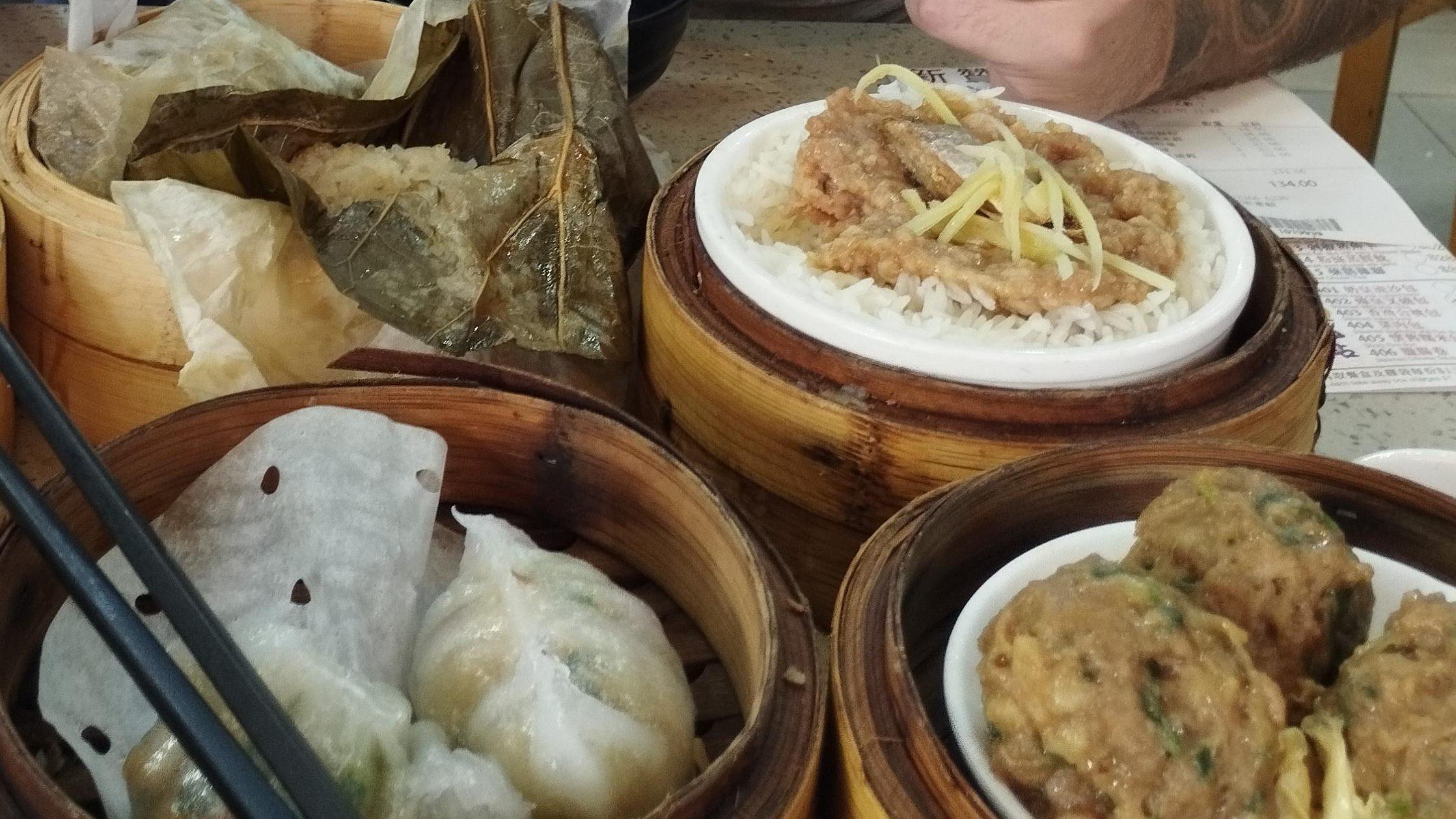
What about dim sum carts? You may have heard or seen that dim sum is sometimes served from a cart; this is done in traditional restaurants (some still survive in Hong Kong, I’ll tell you later) where waiters go by with different dishes on a cart and you pick and choose what you want. It is a bit of an adventure because you do not know what is in each dish, you would have to ask around and then you are charged according to the type of dish left on the table.
How much dim sum should I order? This is totally subjective, as it depends on the time of day you eat it, how hungry you are, how much you usually eat… In Hong Kong, from what I have seen, it is common to eat quite a lot, both dim sum and any other food, but this is usually shared, asking for different dishes in the middle and trying a little of everything.
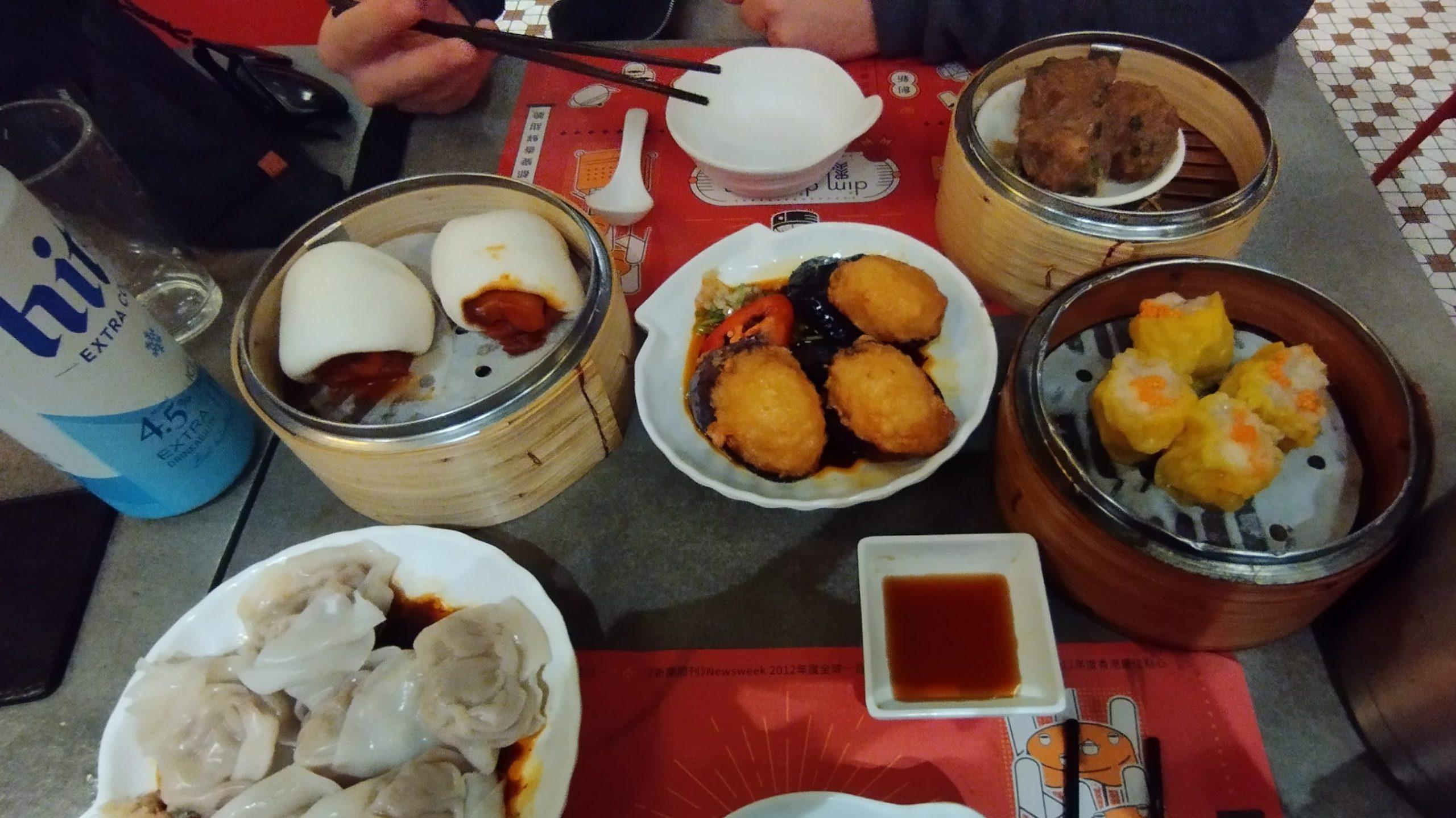
We were two people, and we always ordered between four and six dishes to share (the menu usually indicates how many servings come with each dish, so you can get an idea; also, you can always order more, so I would recommend ordering a little at a time so you don’t have too much food). Keep in mind that each dish usually comes with 3 or 4 portions, unless it is a particular dish that comes inn small portions, such as rice with meat or fish, chicken legs, or specialties.
Best for breakfast, lunch or dinner? Dim sum is traditionally eaten between early morning and late afternoon. In one of the restaurants I mention below, we struck up a conversation with a Hong Kong man who told us that he liked to have dim sum for breakfast on the weekends because it reminded him of his childhood, so we understood that it is more common at breakfast time (that’s also when we saw the longest lines). Anyway, although not all, the are dim sum restaurants that are open until late at night, so it can also be a great option for lunch or dinner.
Hours, queues and prices
As I said earlier, the best time of day to enjoy the dim sum is in the morning, especially for breakfast, and most restaurants are open until 10:00 or 11:00 pm. In my case, the first time I tried dim sum was at dinner, but then I discovered the custom of eating it in the morning and it attracted me much more.
Take a good look at the schedule of the restaurant you go to, as especially the more traditional ones take a break and close at noon. There may be places where you can book online, but what I saw is that there is no such custom; on the contrary, you arrive and if there is no room, you wait. The good thing about going in the morning is that even if it is full, if you wait a bit you will get a seat right away, whereas if you go in the evening and the restaurant closes early, you may not have the opportunity to eat.
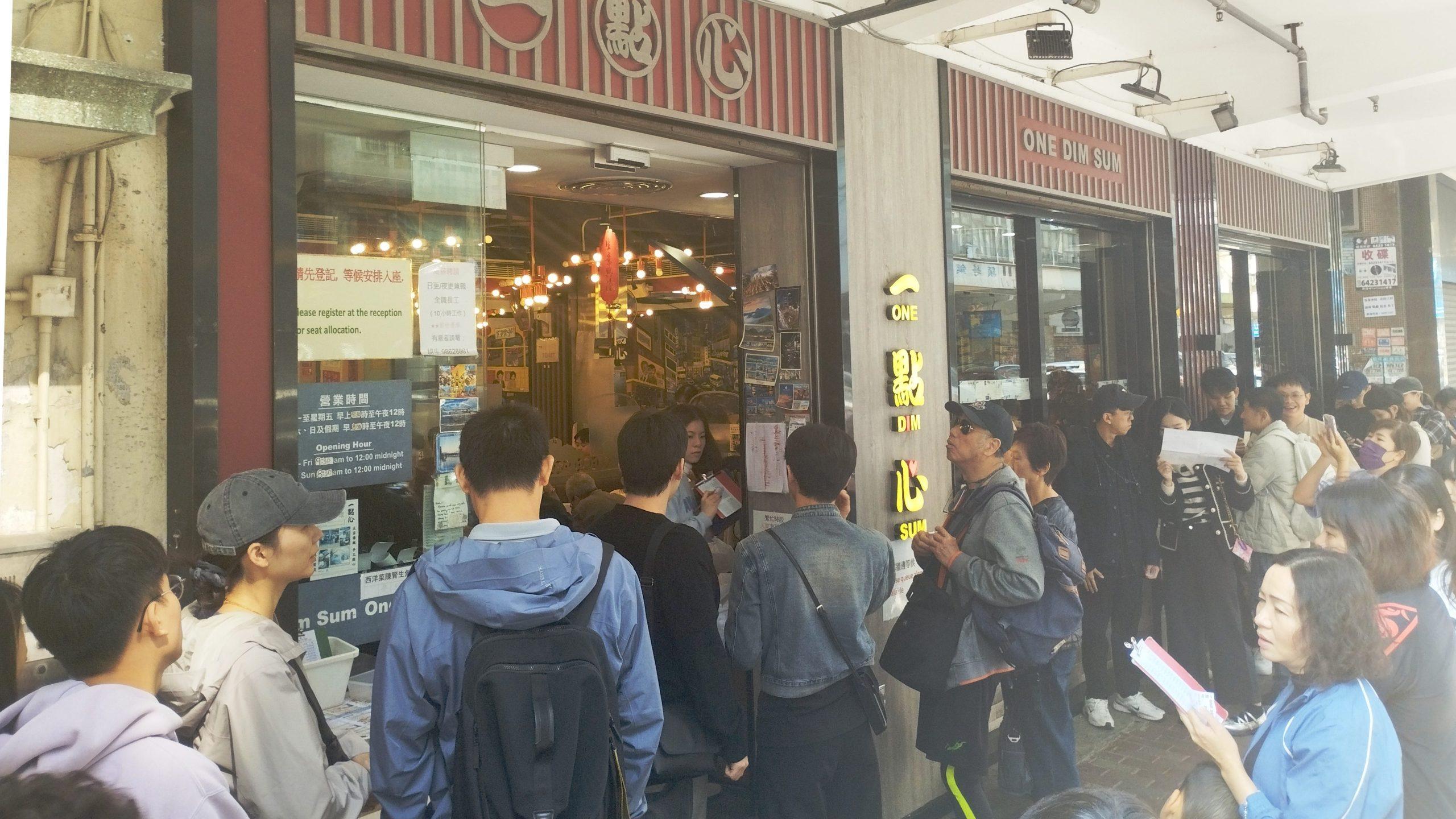
So if you see that a place has a long queue, don’t worry: Hong Kong is very fast-paced place to live and eat. The longest time I waited was 20 minutes at One Dim Sum, and it is a very trendy place that went viral on social networks, so it was to be expected. Otherwise, and especially if you go with one, two or three other people at most, you shouldn’t have a problem. It’s common when you wait in one of these trendy places (it also happened to me at the most famous clay pot rice restaurant, Hing Kee) that they leave you the menu and an order to decide (that’s how they make sure the rhythm flows…).
As for prices, there is little to say: eating dim sum in Hong Kong is one of the most economical ways to eat. Usually, each dish is around HK$25-40, unless they are specialties or larger dishes. There are also closed menus (sets) at very good prices, designed for the daily life of Hong Konng and the purchasing power of its citizens. With some exceptions (I will tell you some of them below), two people can eat for around HK$150 and be completely satisfied. To give you an idea, in one restaurant we paid HK$134 for five courses; in another more fashionable restaurant we paid HK$190 for six courses.
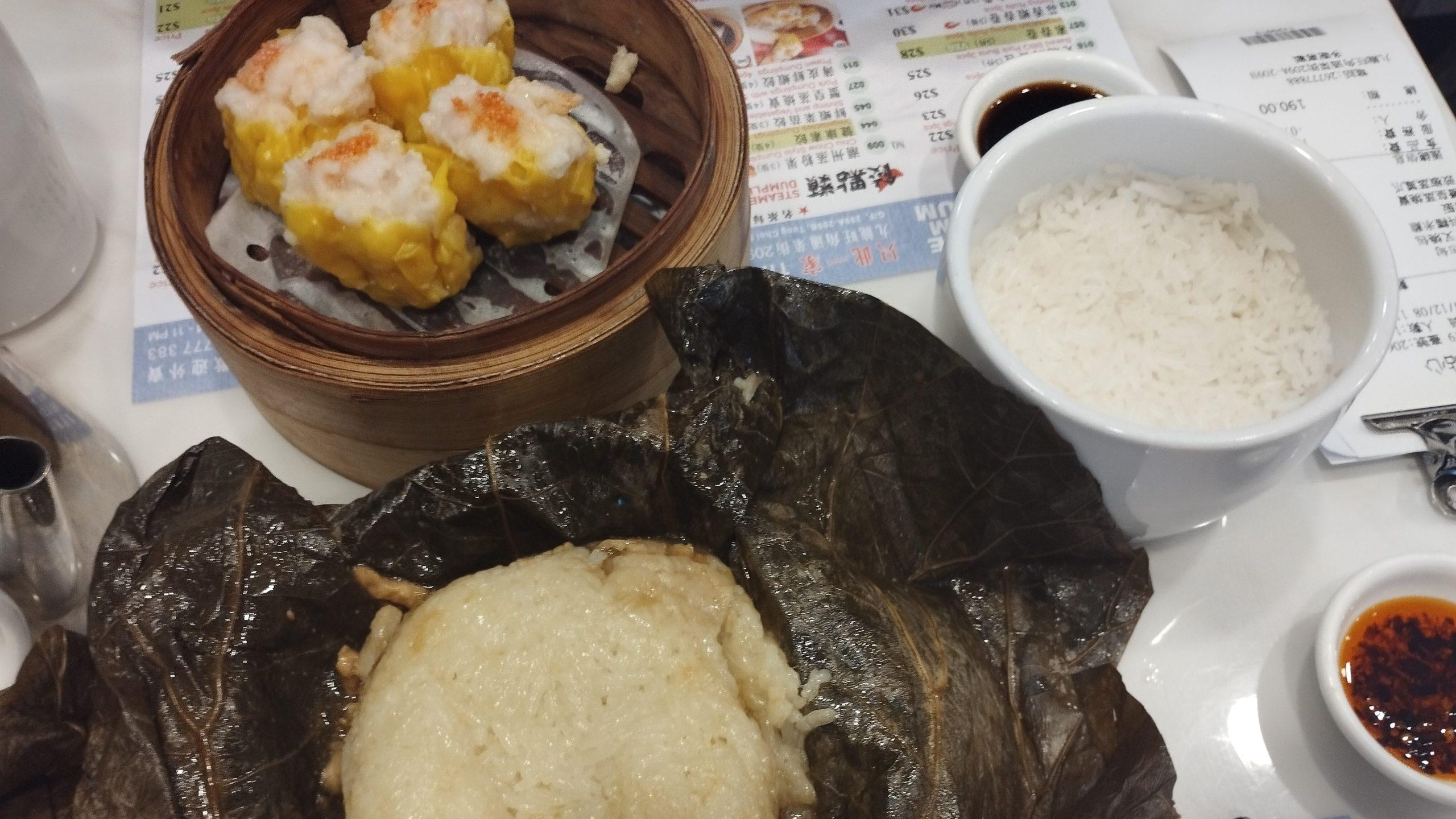
Other things to consider
In traditional restaurants, dim sum is served with tea, which is often included in the order. We saw it mostly included at a price of HK$7 per person. If you want coffee or other drinks, you have to pay extra, but you won’t miss paying for the tea that is already included, let’s say it can be considered a service charge rather than the tea itself.
The truth is that I always drank tea – it has a very pleasant taste, so I felt like having it with the dim sum – that’s why I can’t tell you what happens if you tell them you don’t want it. You could try, although I imagine they won’t understand you (or won’t want to understand you) – it was in dim sum restaurants that I heard the least English.
Some people use the tea to clean their utensils before eating – one of the most curious things I saw in Hong Kong – they always have a plastic jug of hot water for it, but I saw many older people pouring some of the tea into the water bowl and cleaning their dishes with the mixture.
Where to eat dim sum in Hong Kong: restaurant listings
Tested and recommended restaurants:
Dim Dim Sum Mong Kok
My first approach to dim sum in Hong Kong was at this restaurant in Mong Kok, which is open all day and at dinner time, with plenty of room. With a varied menu, this restaurant has been mentioned several times in local and international magazines and guides, which has catapulted it to fame. As a curiosity, they have some pig-shaped baos.
- Location: 106號 Tung Choi St, Mong Kok, Hong Kong
- Open hours: Every day from 11:00 am to 11:00 pm.
- Price: We paid HK$240 for five dishes and a beer.
- Recommendations: The fried eggplant with Sichuan hot sauce, the xialongbao, and especially the pork belly and taro dumplings that blew us away.
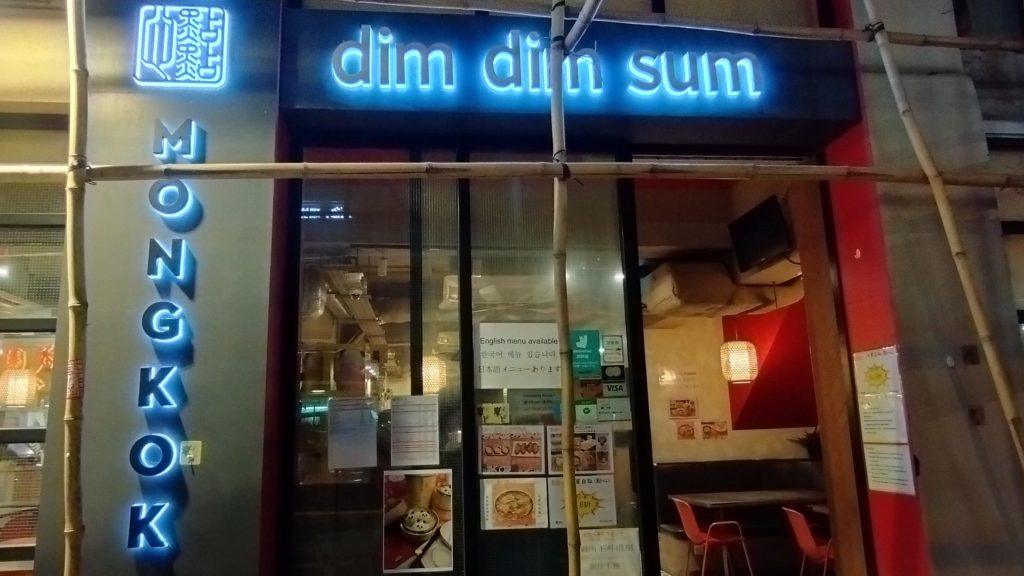
新贊記點心 • 小廚
This traditional venue is located on Nathan Road, just a short walk from our hotel – which I recommend if you’re looking for accommodation, it’s the Salvation Army Booth Lodge – and we didn’t pay any attention to it until one morning when we saw quite a few people crowding the entrance waiting to get in. Here we come tomorrow, we thought, and what a good idea! Not only is it a local, very neighbourhood place, but it is also quite different from the touristy restaurants that populate this area of Yau Ma Tei and Mong Kok. We spent most of our breakfast chatting with a Hong Konger who didn’t hesitate to ask us questions about the trip, and in general we had a super positive experience.
- Location: Hong Kong, Yau Ma Tei, Nathan Rd, 448-452A號, Man Hoo Court, 地下C號舖
- Open hours: Every day from 7:00 am to 10:00 pm.
- Price: We paid HK$134 for five courses.
- Recommendations: The meatballs with cilantro and the traditional siu mai.
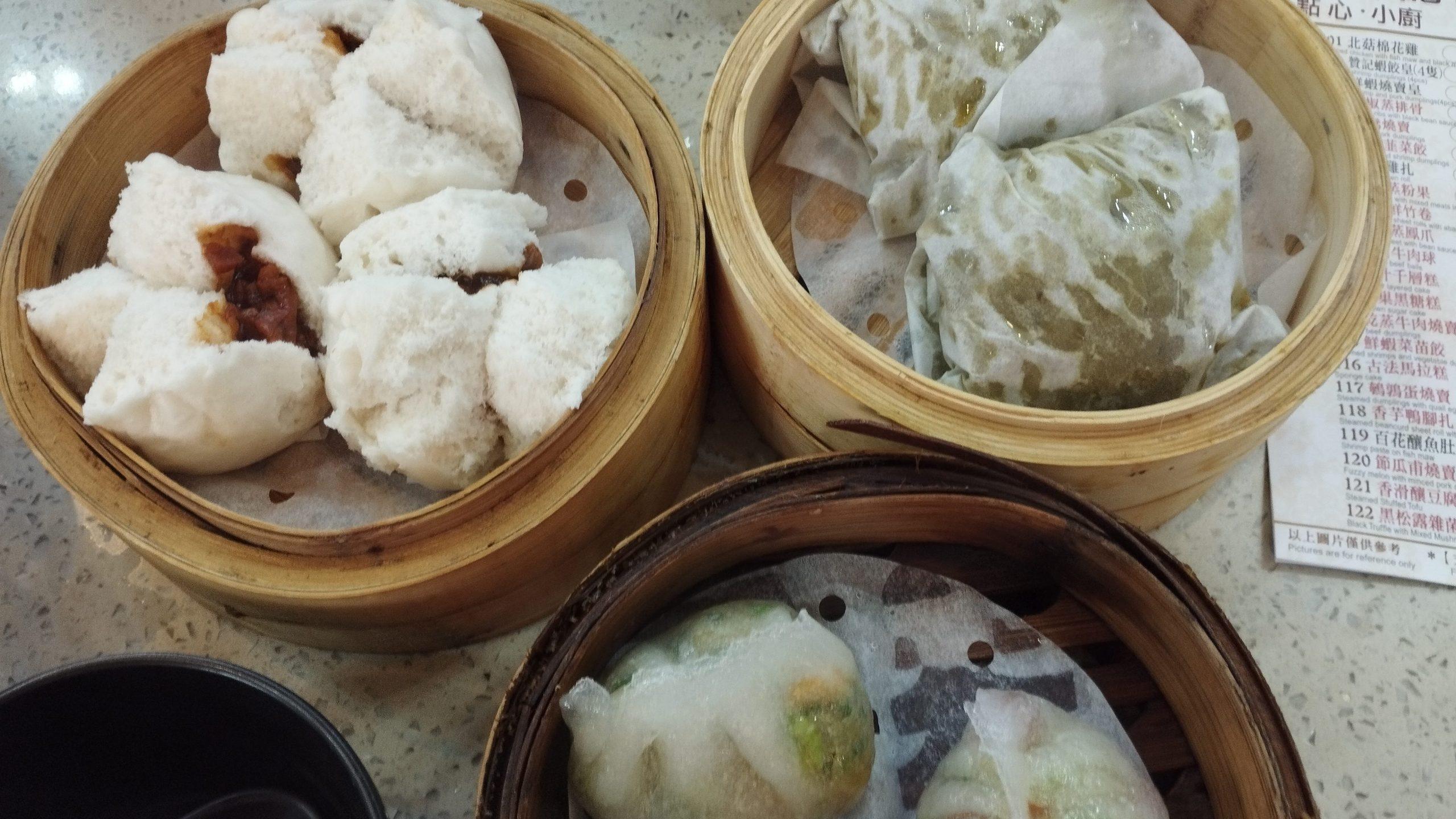
One Dim Sum
One of the hippest places in Hong Kong. Located inn the Prince Edward district, just a few steps from the MTR exit, you can turn the corner and see a huge queue with a number in their hands. Go in, ask for yours and wait while you see the choices, because this is one if the most mainstream places to eat dim sum in Hong Kong… Although the price is a bit higher than in other places I recommend, it is worth it. Here I tried the chicken feet (what a pity not to have done it before) and the specialty, the mando pudding, a delicacy if, like me, you love this fruit.
- Location: G/F, 209A Tung Choi St, Prince Edward, Hong Kong
- Open hours: Every day from 9:30 am to 10:30 pm.
- Price: HK$190 for six courses.
- Recommendations: The lo mai gai, the chicken feet and the mango dessert.
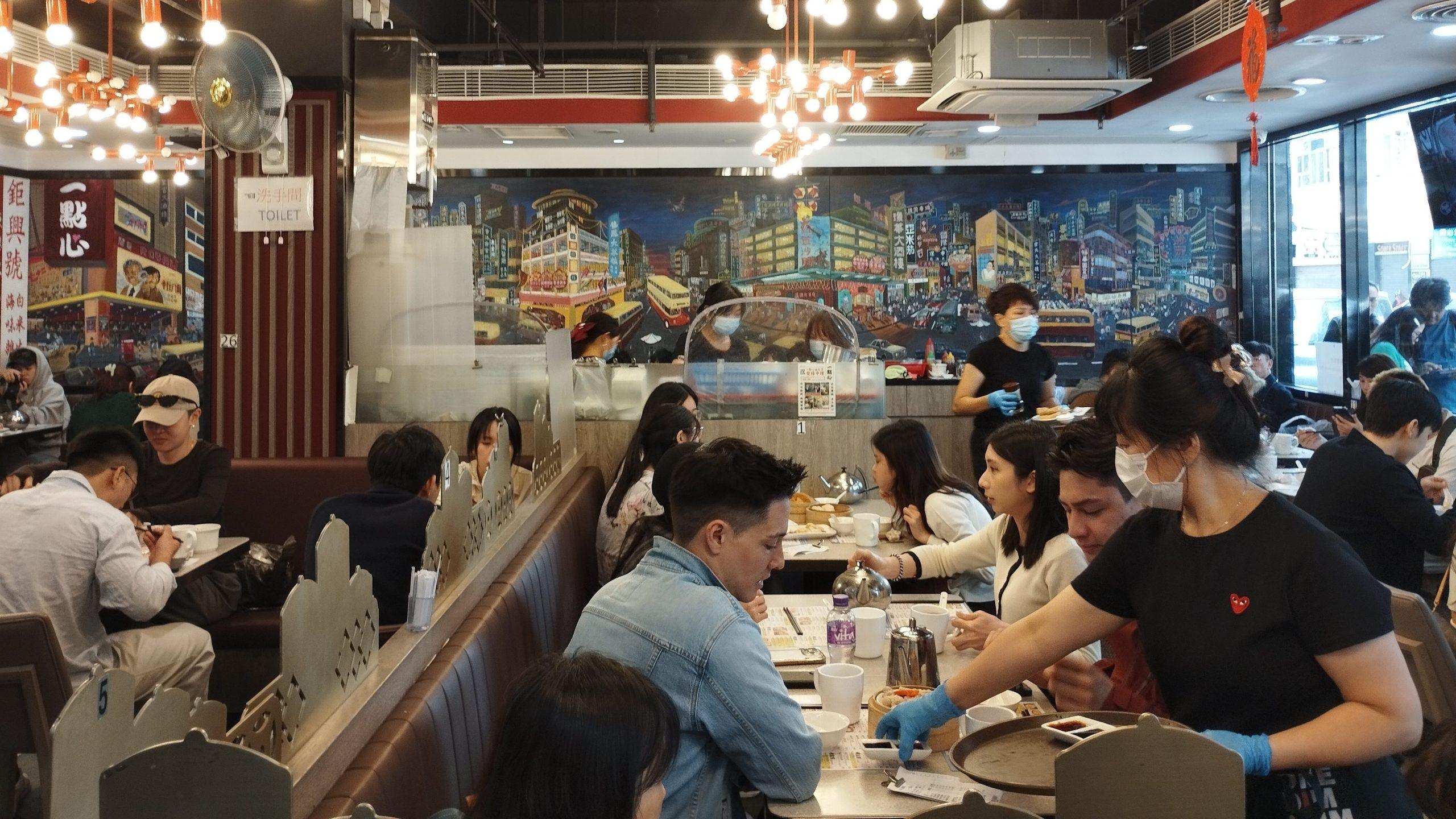
Prince Edward Dim Sum
Taking advantage that we wanted to see the dark side of Hong Kong through a guided tour and that the meeting point was at Prince Edward MTR station, we took the opportunity to come to this place recommended by Google. What a pleasant experience! We ordered several dishes to share, a Hong Kong man explained how to some of the dumplings (some of them have a trick), and we could even pay by credit card (after asking, as there is a big sign that says ‘cash only’). Another neighborhood place full of locals enjoying their breakfast at a very affordable price.
- Location: 394號 Portland St, Mong Kok, Hong Kong
- Open hours: Every day from 9:00 am to 10:00 pm
- Price: HK$128 for five courses.
- Recommendations: The dumpligs with assorted chiuchow-style meats and the char siu bao.
There are two other dim sum restaurants in Hong Kong that I had on my list, but eventually discarded it (and I will give you my reasons):
Lin Heung Tea House
One of the oldest cantonese restaurants in Hong Kong, where they still maintain the custom of serving the dishes from cars that circulate around the premises. If you want to eat dim sum, you should go during the day, as only traditional food is served at night. This onne was on the list, and the experience itself seemed wonderful, but I preferred to go to places that I predicted would be a little quieter and where I could have 100% coltrol over what I was going to eat.
Luk Yu Tea House
This place had been pointed out to me by comments in forums where it was recommended for its variety and tradition. However, when I went to check the menu and prices, I saw some prices that did not match to the reality of the dim sum restaurants that I have shown you previously and that I had experienced so far in Hong Kong. I saw dishes that were around HK$100, and although this place is the oldest teahouse in Hong Kong, I did not find it a must.
I hope this list of tips and suggestions for eating dim sum in Hong Kong will help you enjoy this gastronomic wonder of HK, which for me was one of the greatest discoveries of the trip. If you have any other suggestions, details or comments, please feel free to send them to me to complete this post. Thank you, traveler!

